- Home
- Robert J. Sawyer
The Oppenheimer Alternative
The Oppenheimer Alternative Read online
THE OPPENHEIMER ALTERNATIVE
Copyright © 2020 by Robert J. Sawyer
All Rights Reserved
Cover and interior: Bibliofic Designs
SFWRITER.COM Inc.
Mississauga, Ontario, Canada
ISBN (Kindle): 978-1-988415-22-2
ISBN (ePub): 978-1-988415-23-9
The Oppenheimer Alternative is also available in print and as an audiobook.
eBook version 3.0 (2020-05-17 at 18:40)
sfwriter.com
Table of Contents
Copyright
Advance Praise for The Oppenheimer Alternative
Praise for Robert J. Sawyer
The Oppenheimer Alternative
Dedication
Acknowledgments
Dramatis Personae
Author’s Note
Epigraph
Prologue
Chapter 1
Chapter 2
Chapter 3
Chapter 4
Chapter 5
Chapter 6
Chapter 7
Chapter 8
Chapter 9
Chapter 10
Chapter 11
Chapter 12
Chapter 13
Chapter 14
Chapter 15
Chapter 16
Chapter 17
Chapter 18
Chapter 19
Chapter 20
Chapter 21
Chapter 22
Chapter 23
Chapter 24
Chapter 25
Chapter 26
Chapter 27
Chapter 28
Chapter 29
Chapter 30
Chapter 31
Chapter 32
Chapter 33
Chapter 34
Chapter 35
Chapter 36
Chapter 37
Chapter 38
Chapter 39
Chapter 40
Chapter 41
Chapter 42
Chapter 43
Chapter 44
Chapter 45
Chapter 46
Chapter 47
Chapter 48
Chapter 49
Chapter 50
Chapter 51
Chapter 52
Chapter 53
Chapter 54
Chapter 55
Chapter 56
Chapter 57
Bibliography
About the Author
Enjoyed this book?
Novels by Robert J. Sawyer
Visit Robert J. Sawyer’s web site for bonus features
Advance Praise for The Oppenheimer Alternative
“I loved it!”
—Lee Smolin, bestselling author of The Trouble with Physics
“An imaginative restructuring of a phantasmagoric life into an alternative phantasmagorical story. Oppenheimer fans will be intrigued.”
—Martin J. Sherwin, co-author of the Pulitzer Prize-winning biography American Prometheus: The Triumph and Tragedy of J. Robert Oppenheimer
“A truly science fictional work of alternate history which turns on the decisions—and discoveries—of the great physicists who wrote the history of the 20th century: Einstein, Fermi, Gödel, and Oppenheimer. They are the vividly realized, all-too-human characters who people this novel, and give its brilliant speculations human life and blood. Bravo!”
—S.M. Stirling, author of Dies The Fire
“Incredibly realistic: the characters, locations, the era, and even the science. I felt like I was back in Los Alamos—and I should know: I worked there! Breathlessly riveting; Sawyer pulls it off masterfully.”
—Doug Beason, former Associate Laboratory Director, Los Alamos National Laboratory
“The feel and detail of the Manhattan Project figures is deep and well done. I knew many of these physicists, and Sawyer nails them accurately.”
—Gregory Benford, author of The Berlin Project
“I enjoyed it tremendously! Really great, a page turner. I was hooked from the beginning to the end. Another fine addition to the Sawyer canon!”
—Andre Bormanis, producer, The Orville and Cosmos
“Sawyer’s impressive use of scientific and historical detail and Sawyer’s characterization of the man himself pull back the layers of Oppenheimer’s morals, genius, and grief. Science fiction fans will devour this smart speculative tale.”
—Publishers Weekly
“An expert and engrossing knitting of the threads of history, with genuine characters of the mid 20th Century, to weave out a compulsive fictional narrative.”
—Jem Rolls, author of the play The Inventor of All Things about Leo Szilard
“Sawyer portrays brilliantly and poignantly the struggles of the scientists who started it all and were consequently obliged to bear an unbearable burden.”
—James Christie, Chair, Project Ploughshares, member organization of the Nobel Peace Prize-winning International Campaign to Abolish Nuclear Weapons
“My favorite Sawyer book of all; the extrapolation is as brilliant as the history. An extremely clever science-fictional tale that grows naturally out of the research done by extremely smart people on the way to the development of the atomic age. They will live for you after you are done reading this book; this is what they were really like. A solid award contender!”
—Amazing Stories
“You can call this alternate history or alternate astrophysics (or both). Whatever term you choose, it’s a terrific story.”
—Eric Flint, author of 1632
“Sawyer has outdone himself! No one could have taken on this project with such gusto and with such a search for the truth as this outstanding author. I’ve never read such a complete and thrilling account of Oppenheimer’s world.
—Jonas Saul, author of the Sarah Roberts series
Praise for Robert J. Sawyer
“A new Robert J. Sawyer book is always cause for celebration.”
—Analog Science Fiction and Fact
“Sawyer not only has an irresistibly engaging narrative voice but also a gift for confronting thorny philosophical conundrums. At every opportunity, he forces his readers to think while holding their attention with ingenious premises and superlative craftsmanship.”
—Booklist
“Can Sawyer write? Yes—with near-Asimovian clarity, with energy and drive, with such grace that his writing becomes invisible as the story comes to life in your mind.”
—Orson Scott Card, author of Ender’s Game
“Robert J. Sawyer is by any measure one of the world’s leading (and most interesting) science-fiction writers. His fiction is a fascinating blend of intellectually compelling big ideas and humane, enduring characters.”
—The Globe and Mail
“Sawyer, an articulate fountain of ideas, is the genre’s northern star—in fact, one of the hottest SF writers anywhere. By any reckoning Sawyer is among the most successful Canadian authors ever.”
—Maclean’s: Canada’s National Magazine
“Robert J. Sawyer is a writer of boundless confidence and bold scientific extrapolation.”
—The New York Times
“Sawyer’s books—always rich in science, action, and profound thinking—never fail to surprise, delight, and cause us to transcend our ordinary thinking. I’ve read Crichton, Asimov, Heinlein, Clarke, King, and Koontz—and Sawyer outdoes
them all.”
—Clifford A. Pickover, author of Time: A Traveler’s Guide
“A polished, exciting writer. Sawyer writes with the scientific panache and grandeur of Arthur C. Clarke and the human touch of Isaac Asimov.”
—Quill & Quire
“Cracking open a new Robert J. Sawyer book is like getting a gift from a friend who visits all the strange and undiscovered places in the world. You can’t wait to see what he’s going to amaze you with this time.”
—John Scalzi, author of Old Man’s War
“Sawyer is Canada’s answer to Michael Crichton.”
—The Toronto Star
“No reader seeking well-written stories that respect, emphasize and depend on modern science should be disappointed by the works of Rob Sawyer.”
—The Washington Post
“Sawyer is a terrific writer. He can write about the most sophisticated science while giving readers the room to understand what’s happening and follow the plot.”
—Winnipeg Free Press
THE
OPPENHEIMER
ALTERNATIVE
A Novel
Robert J. Sawyer
Dedication
For
Alisha Souillet
Who made this a better book
And me a better person
Acknowledgments
Special thanks to the late Manhattan Project physicist and Nobel laureate Luis W. Alvarez, who graciously spent an afternoon with me in 1983, a meeting I’ll never forget; to Dr. Doug Beason, former Associate Laboratory Director, Los Alamos National Laboratory; to Alex von Thorn, whose great-uncle, Brigadier General Thomas F. Farrell, was an assistant to Manhattan Project leader General Leslie R. Groves; to Liz Cano, who first introduced me to the work of Leo Szilard via Jem Rolls’s one-man play “The Inventor of All Things,” and to Jem Rolls himself.
Many thanks to Sharon Fitzhenry and Richard Dionne at Fitzhenry Whiteside’s Red Deer Press imprint in Canada and to Shahid Mahmud and Lezli Robyn at Arc Manor’s CAEZIK SF & Fantasy imprint in the United States: they rose to the almost-impossible challenge of getting this book out in time for the seventy-fifth anniversary of the birth of the atomic age in the summer of 2020. Special thanks to my editor, Adrienne Kerr—it was wonderful to be working with her again. Adrienne used to be my editor at Penguin Random House Canada, but Fitzhenry & Whiteside engaged her on a freelance basis to edit this book; you can hire her, too: see adriennekerr.net.
Thanks for help along the way to Alisha Souillet, Roy Ashton, Gabor Bagi, Gregory Benford, Jerry Bokser, Dave Brohman, David De Graff, Paddy Forde, Marcel Gagné, James Alan Gardner, Gerald I. Goldlist, Dominick Grace, Judith Hayman, Steve Hoban, Matt Kennedy, Michael Lennick, W. Thomas Leroux, Chris Lotts, Donald Maass, Mickey Mickkelson, Brian Morey, W. Maynard Pittendreigh, Jensenne Roculan, Robin Rowland, Daryl Rybotycki, Stephen W. Saffel, James Snyder, Laura Frankos Turtledove, Vince Gerardis, Alex Wellerstein, Elizabeth Westbrook-Trenholm, Andreas Wolz, and George Zebrowski.
Beta readers for this novel were Robb Ainley, Keith Ballinger, Denise Bérubé (who read the manuscript while in Hiroshima!), Ted Bleaney, Andre Bormanis, Aleksandar Bradaric, Stephanie Bradfield, Wayne Brown, Nixie Byrd, Jon Caruana, James Christie, Fiona Reid Cosgrove, Melissa L. Cox, Irene Dutchak, Andrew Edmunds, Talisa Edmunds, Shayna Feldstein, Hugh Gamble, Michael Jäger, Andrew Zimmerman Jones, Herb Kauderer, Wouter Lagerweij, Clare Levijoki, Joel Lee Liberski, John Lynch, Michael Mariani, Erik Maronde, Ryan McCarty, Margareta Mina, Andrea Mitchell, Chris Nolan, Colin Porter, Karin Porter, Lou Prosperi, Natalka Roshak, Judy Sanders, Larry Schoeneman, Georgina Scott, Lee Smolin, Lynne Stonier-Newman, Lou Sytsma, Gord Tulloch, Keith Ward, Bret Wiebe, Stephanie Wilson, and Len Zaifman.
For the first time in over twenty years, I’ve written a novel without first securing a publishing contract. My Patreon supporters made that possible, including, most generously, Arioch, Christopher Bair, Keith Ballinger, Kelly Barratt, Jennifer Blanchard, Ronda Bradley, James Christie, Genevieve Doucette, Hugh Gamble, Gregory Koch, Joel Lee Liberski, Gillian Martin, Christina Dawn Monroe, Carol Richards, Robin Schumacher, Timothy W. Spencer, Andrew Tennant, Scott Wilson, Joshua Paul Wolff, and Brian Wright. If you’d like to join them in supporting my work directly, please visit patreon.com/robertjsawyer.
Most of all, thanks to Carolyn Clink, the strong nuclear force that keeps everything from flying apart.
Dramatis Personae
Luis Alvarez (1911-1988): American physicist; 1968 Nobel laureate.
Stepan Zakharovich Apresyan (1914-1990): Russian diplomat and spy; vice-counsel at the Soviet Consulate in San Francisco.
Kenneth Bainbridge (1904-1996): American physicist; director of the Manhattan Project’s Trinity test.
Hans Bethe (1906-2005): German-born American physicist; 1967 Nobel laureate.
Patrick Blackett (1897-1974): British physicist; Robert Oppenheimer’s tutor at Cambridge’s Cavendish Laboratory; 1948 Nobel laureate.
Niels Bohr (1885-1962): Danish physicist; 1922 Nobel laureate.
Vannevar Bush (1890-1974): Head of the U.S. Office of Scientific Research and Development.
James F. Byrnes (1882-1972): Secretary of State under Harry S. Truman.
Barbara Chevalier (1907-2003): First wife of Haakon Chevalier.
Haakon Chevalier [“HOKE-on SHEV-al-EE-eh”] (1901-1985): American-born professor of French literature at the University of California at Berkeley and translator at the Nuremberg Trials.
Robert Christy (1916-2012): Canadian-born physicist.
Arthur Holly Compton (1892-1962): American physicist; 1927 Nobel laureate.
Edward Condon (1902-1974): American physicist.
Watson Davis (1896-1967): editor, Science Service.
Peer de Silva (1917-1978): Manhattan Project security officer.
Major General Walter Dornberger (1895-1980): Military leader of Germany’s V-2 rocket program.
Helen Dukas (1896-1982): Einstein’s live-in secretary.
Freeman Dyson (1923-2020): British-born American physicist.
Albert Einstein (1879-1955): German-born Swiss/American physicist; 1921 Nobel laureate.
George C. Eltenton (1905-1991): British chemical engineer (or so it was thought at the time; actually a physicist) for Shell Development in California who approached Haakon Chevalier on behalf of Russia.
Ward V. Evans (1880-1957): member of the 1954 Atomic Energy Commission security-review board.
Enrico Fermi [“FAIR-mee”] (1901-1954): Italian-born American physicist; 1938 Nobel laureate. In 1942, he produced the first-ever controlled nuclear chain reaction at the University of Chicago.
Richard Feynman [“FINE-man”] (1918-1988): American physicist; 1965 Nobel laureate.
Lloyd K. Garrison (1897-1991): American lawyer; represented Oppenheimer before the 1954 Atomic Energy Commission security-review board.
Kurt Gödel (1906-1978): Austrian-born American logician.
Gordon Gray (1909-1982): chairman of the 1954 Atomic Energy Commission security-review board.
General Leslie R. Groves (1896-1970): Head of the Manhattan Project.
Bourke Hickenlooper (1896-1971): United States senator and past chairman of the Joint Committee on Atomic Energy.
Verna Hobson (1923-2004): Robert Oppenheimer’s secretary at the Institute for Advanced Study.
J. Edgar Hoover (1895-1972): Director of the Federal Bureau of Investigation.
Dieter Huzel (1912-1994): German rocketeer working under Wernher von Braun.
Lt. Lyall Johnson (1914-2006): American counter-intelligence officer stationed on the campus of the University of California, Berkeley.
Lyndon B. Johnson (1908-1973): 36th President of the United States, in office 22 November 1963 to 20 January 1969.
George Kistiakowsky (1900-1982): Ukrainian-America
n chemist, leader of explosives group at Los Alamos.
Anne Wilson Marks (1924-2006): Robert Oppenheimer’s secretary at Los Alamos.
Herbert Marks (1907-1960): Robert Oppenheimer’s lawyer (and Anne’s husband).
Lt. Col. (and later Major General) Kenneth Nichols, Ph.D. (1907-2000): General Groves’s assistant, and, later, general manager of the Atomic Energy Commission.
J. Robert Oppenheimer (1904-1967): American physicist, scientific director of the Los Alamos site of the Manhattan Project; director of the Institute for Advanced Study.
Katherine “Kitty” Oppenheimer (1910-1972): German-American botanist; wife of Robert Oppenheimer.
Katherine “Tyke” Oppenheimer (1944-1977): Robert and Kitty’s younger child, known as “Toni” when she was older.
Peter Oppenheimer (1941- ): Robert and Kitty’s older child.
William S. “Deak” Parsons (1900-1953): associate director of the Los Alamos laboratory under Oppenheimer; weaponeer on the Enola Gay; promoted to Rear Admiral following the war.
Lt. Col. Boris Pash (1900-1995): American military intelligence officer; commander of the Alsos Mission into Germany.
Isidor Isaac Rabi [“ROB-ee”] (1898-1988): Austrian-born American physicist; 1944 Nobel laureate.
Roger Robb (1907-1985): attorney for the Atomic Energy Commission.
C. Arthur Rolander, Jr. (1920-2017): First, the Atomic Energy Commission’s deputy director of security, then vice-president of General Atomic.
Robert “Bob” Serber (1909-1997): American physicist; Robert Oppenheimer’s close colleague.
Rita “Pat” Sherr (1916-1997): wife of physicist Rubby [“ROO-be”] Sherr; looked after Robert Oppenheimer’s daughter.
Robert Sproul (1891-1975): President of the University of California, Berkeley.
Henry L. Stimson (1867-1950): Secretary of War during both World Wars.
Lewis L. Strauss [“Straws”] (1896-1974): Chairman of the Atomic Energy Commission.
Leo Szilard [“LAY-o SIL-ard”] (1898-1964): Hungarian-born physicist.
Jean Tatlock, M.D. (1914-1944): American Communist Party member; Robert Oppenheimer’s mistress.
Ted Taylor (1925-2004): Mexican-born American physicist who worked at Los Alamos and then headed the Orion project.

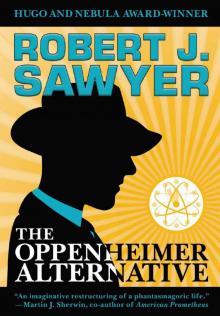 The Oppenheimer Alternative
The Oppenheimer Alternative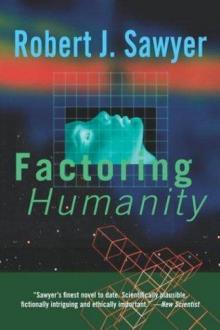 Factoring Humanity
Factoring Humanity The Shoulders of Giants
The Shoulders of Giants Stream of Consciousness
Stream of Consciousness End of an Era
End of an Era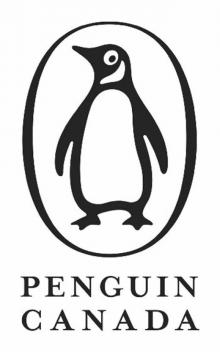 The Terminal Experiment
The Terminal Experiment Far-Seer
Far-Seer Mindscan
Mindscan You See But You Do Not Observe
You See But You Do Not Observe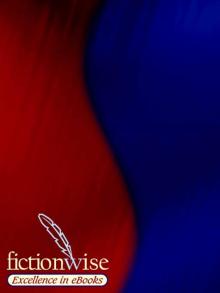 Star Light, Star Bright
Star Light, Star Bright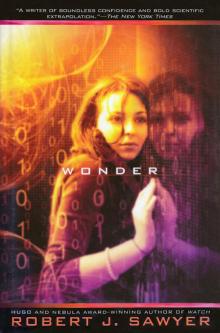 Wonder
Wonder Wiping Out
Wiping Out Flashforward
Flashforward Above It All
Above It All Frameshift
Frameshift The Neanderthal Parallax, Book One - Hominids
The Neanderthal Parallax, Book One - Hominids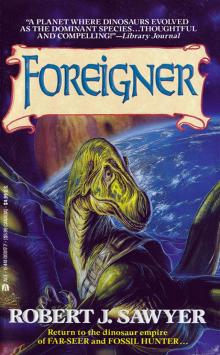 Foreigner
Foreigner Neanderthal Parallax 1 - Hominids
Neanderthal Parallax 1 - Hominids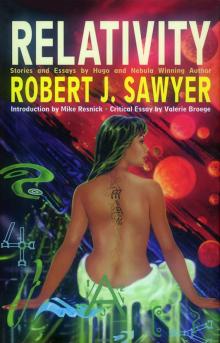 Relativity
Relativity Identity Theft
Identity Theft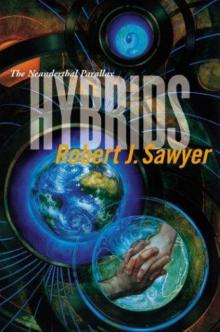 Hybrids np-3
Hybrids np-3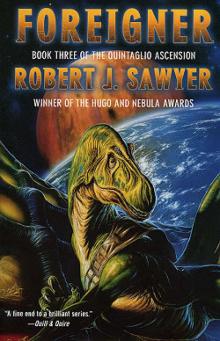 Foreigner qa-3
Foreigner qa-3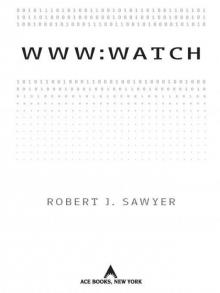 WWW: Watch
WWW: Watch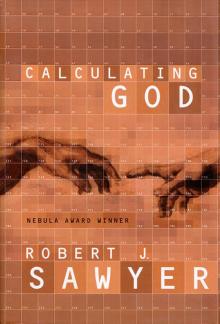 Calculating God
Calculating God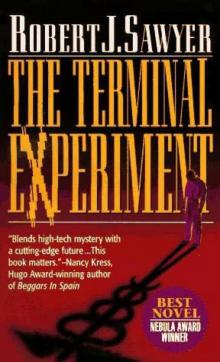 The Terminal Experiment (v5)
The Terminal Experiment (v5) Peking Man
Peking Man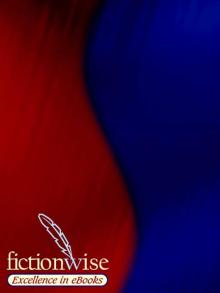 The Hand You're Dealt
The Hand You're Dealt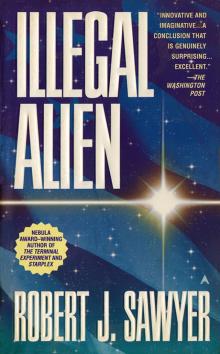 Illegal Alien
Illegal Alien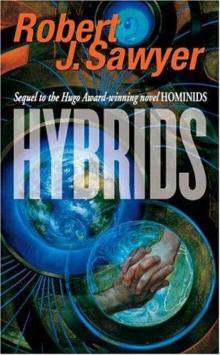 Neanderthal Parallax 3 - Hybrids
Neanderthal Parallax 3 - Hybrids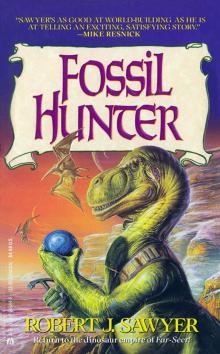 Fossil Hunter
Fossil Hunter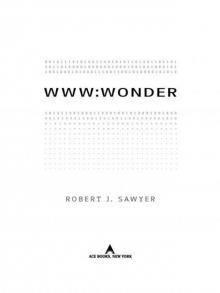 WWW: Wonder
WWW: Wonder Iterations
Iterations Red Planet Blues
Red Planet Blues Rollback
Rollback Watch w-2
Watch w-2 Gator
Gator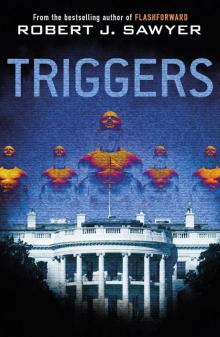 Triggers
Triggers Neanderthal Parallax 2 - Humans
Neanderthal Parallax 2 - Humans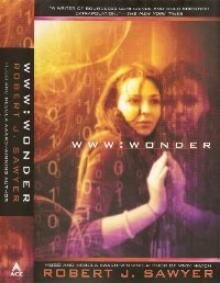 Wonder w-3
Wonder w-3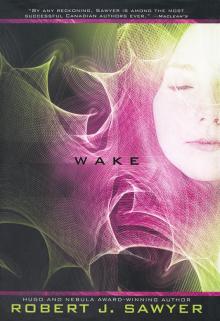 Wake
Wake Just Like Old Times
Just Like Old Times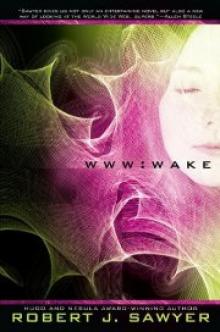 Wake w-1
Wake w-1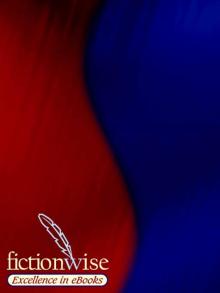 Fallen Angel
Fallen Angel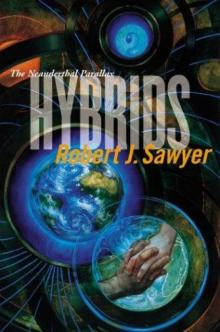 Hybrids
Hybrids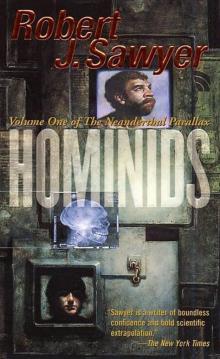 Hominids tnp-1
Hominids tnp-1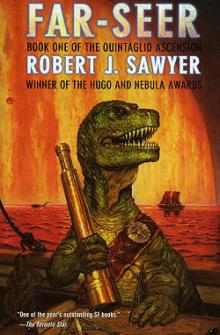 Far-Seer qa-1
Far-Seer qa-1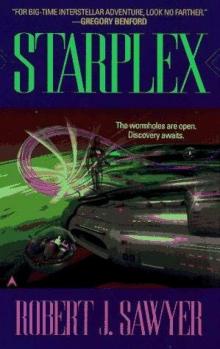 Starplex
Starplex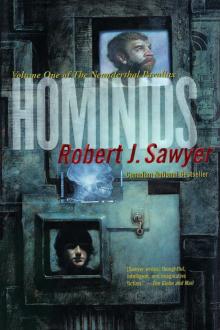 Hominids
Hominids Identity Theft and Other Stories
Identity Theft and Other Stories Watch
Watch Golden Fleece
Golden Fleece Quantum Night
Quantum Night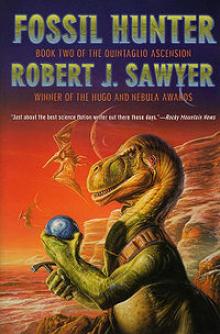 Fossil Hunter qa-2
Fossil Hunter qa-2 Humans np-2
Humans np-2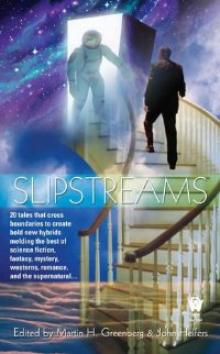 Biding Time
Biding Time